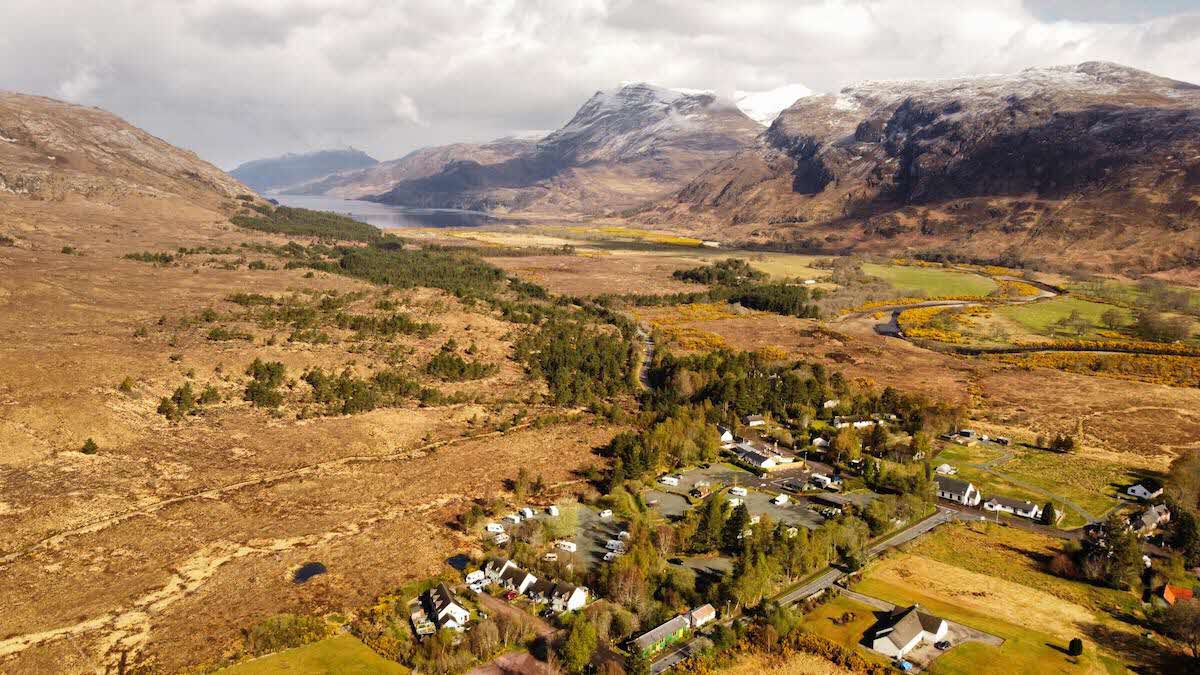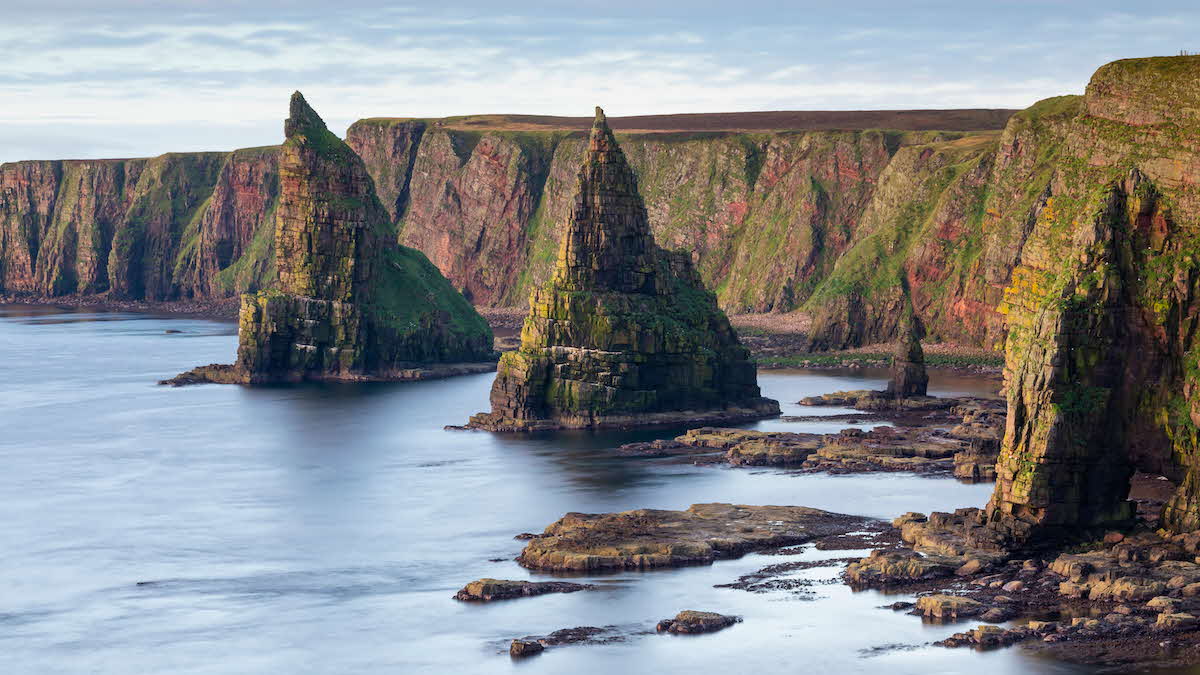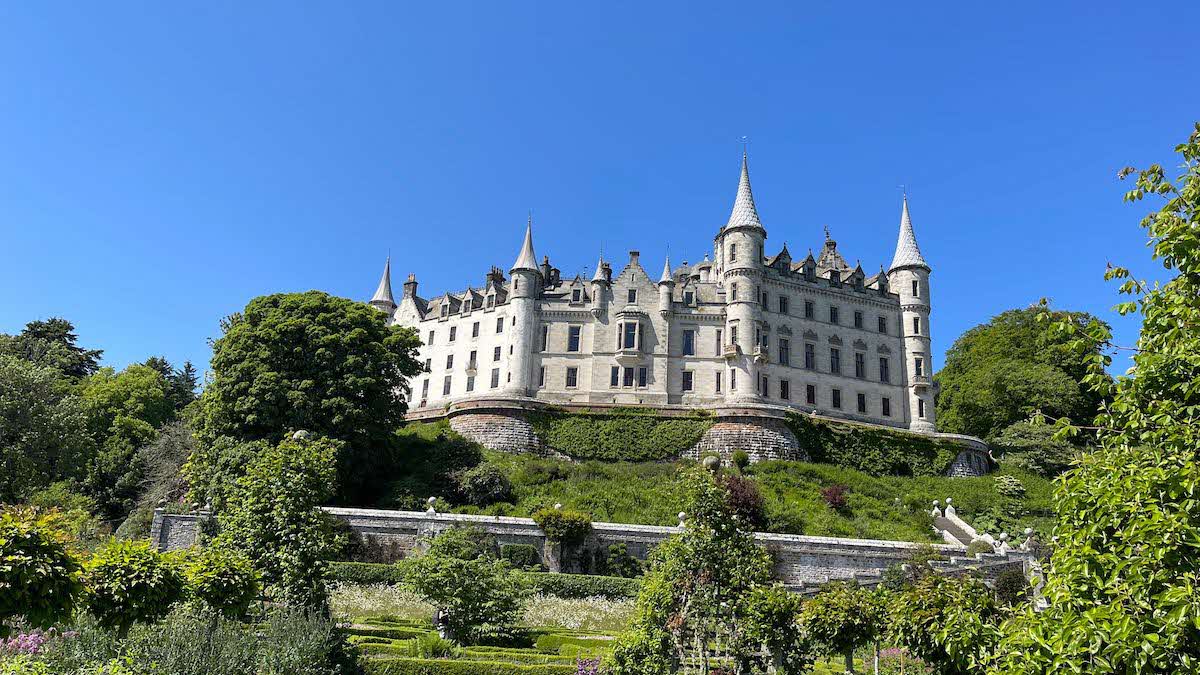Book a Club campsite
Explore hundreds of Club campsites and plan for stays throughout the year. There are plenty of locations to choose from, search and book today.
Book nowJane McGowan gets behind the wheel of a campervan for the first time on a spellbinding tour of the Highlands
 Durness Beach near Dunnet Club Campsite by member David Graham
Durness Beach near Dunnet Club Campsite by member David Graham
This mini tour of Scotland’s vast Highlands region takes in sections of the celebrated North Coast 500 – a 516-mile trip that has been consistently voted ‘Britain’s Best Driving Route’ by motorists. Whether you complete the whole route or just portions of the journey, the reason for its popularity becomes immediately evident as you encounter an abundance of riches including lochs, mountains, rolling hillsides, heathland and vast white sandy beaches – not to mention impressive castles and ancient forests. You will find yourself very quickly running out of superlatives as another wonder of nature unfurls in front of you.
My journey, as with many NC500 trips, began at Inverness. Once over the Kessock Bridge and heading north, it is quite astounding just how quickly the landscape transforms from the industrial hustle and bustle of the ‘Capital of the Highlands’ to vast natural vistas.
My daughter and I chose to make the trip in late March, which is considered out of season. As a first-time campervan driver, I was more than a little relieved that the roads were empty – especially when the 50-mile-an hour winds and hail kicked in. And while the weather did mean our tour was a little curtailed and some activities were off limits, it also meant we were free to enjoy the area at its peaceful best.
 Kinlochewe Club campsite among the hills and lochs of NW Scotland by member Gordon Milne
Kinlochewe Club campsite among the hills and lochs of NW Scotland by member Gordon Milne
The Club has numerous main sites and Certificated Locations (CLs) dotted across the Highlands – we began our tour by heading towards Kinlochewe Club Campsite. It is almost impossible to take in the grandeur of the scenery as the road skirts loch and river, and winds through the splendour of Glen Docherty – but don’t worry, there are plenty of viewpoints if you want to pull in and admire it all (or give way to an over-enthusiastic driver). It is worth making a stop to view Loch a’ Chroisg (‘Loch of the Crossing’) which, according to locals, got its name from cattle drovers making their way from Wester Ross to Dingwall.
The Club campsite sits beneath the mountain of Beinn Eighe in the heart of Kinlochewe village. It’s a location that offers great opportunities for both serious hikers and those seeking more sedate exploration. Direct access to the Beinn Eighe and Loch Maree Islands National Nature Reserve (NNR) is just a short stroll away, past a pretty petrol station that also doubles as a coffee bar and village store. Here you will find an information board and directions to the visitor centre which contains displays, a 3D map and details of the region’s wildlife.
Established in 1951, the NNR is the oldest nature reserve in Great Britain. Visitors can enjoy a mix of way-marked trails of varying difficulties from both the visitor centre and Coille na Glas-Leitir car park further to the west. For more information see the NNR pages at nature.scot.
Loch Maree is a must-see. Its glassy waters are just over 21km in length and peppered with more than 40 ‘scattered islands’ – a fragment of the original Caledonian Pine Forest. You are permitted to swim or paddle responsibly in the loch, but visitors are urged to follow the Scottish Outdoor Access Code (outdooraccess-scotland.scot).
The landscape really is the star of the show on this tour, but the windswept village of Torridon is well worth a visit and the drive will take you past magnificent mountains, cliffs and gorges. It’s another great base for walking. In fact, for those who want to participate in a spot of ‘Munro-bagging’ – the practice of reaching the peaks of the 282 Scottish mountains over 3,000ft – there are several Munros in this area, including Beinn Alligin, which stands at a ‘mere’ 3,230 ft, or Liathach, peaking at 3,456ft.
Next on our route was Altnaharra Club Campsite. This is over 100 miles from Kinlochewe, but if you fancy a diversion, the fishing village of Ullapool is a great place to visit. Here, you will find several inns, as well as the West Coast Delicatessen – should you want to stock up on cheese and other award-winning produce.
Actually, that may not be such a bad idea as, once on site at Altnaharra, the nearest shop is around 20 miles away. Situated on the edge of Loch Naver and offering a direct view of Ben Klibreck, this spot is the very definition of getting away from it all – it has to be one of the most picturesque sites on the network. While it may be remote, there’s plenty to keep you busy in the area from fly fishing to wildlife watching – and, of course, there are some splendid walking opportunities.
 Duncansby Head. Photo courtesy of Visit Scotland/Kenny Lam
Duncansby Head. Photo courtesy of Visit Scotland/Kenny Lam
We headed farther north to Dunnet Bay Club Campsite on what was possibly the windiest day of the year. We received a very warm welcome from managers Clare and Alan, who found us a good pitch for the challenging conditions and offered great recommendations for things to see and do in the area.
It was also great to chat to fellow first-time driver Laura, who was undertaking a trip with her daughter, dad and sister in memory of her mum, who had sadly passed away before being able to realise her dream of completing the NC500.
At the risk of repeating myself, the view from the site is wonderful – comprising miles of dunes and white sands. We enjoyed a lovely beach stroll once the wind had subsided and marvelled at the surfers who were heading for the crystal clear – but I would have thought freezing – ocean.
From the site you can walk into Dunnet, where you will find the Dunnet Bay Distillery. This ‘wee distillery’ uses Highland water and foraged botanicals to produce rum, gin and vodka in small batches. Such is the attention to detail that even the copper stills that are used in the distillation process have names: ‘Margaret’ and ‘Elizabeth’!
Tours are available, as well as cocktail-making workshops. Children are welcome – but of course not permitted to sample any of the drinks – and dogs are also allowed to accompany you on the tours. There are non-alcoholic goodies available too and, just so designated drivers don’t miss out, take-home containers are supplied so you can sample the produce back on site.
The distillery is just five miles from Dunnet Head, the most northerly point of mainland Britain. The nature reserve here is home to an impressive array of seabirds such as guillemots, puffins and razorbills, and offers –yes, you’ve guessed it – a splendid view, which on a clear day stretches out over the Pentland Firth to Orkney.
According to Clare, most visitors spend just a night or two at Dunnet Bay as part of the NC500. However, it is worth a longer stay as there is plenty to keep you occupied, including sea fishing as well as boat trips to Orkney, leaving from John o’ Groats – which in itself is obviously worth a visit. No doubt John o’ Groats is very busy during the summer months as people queue for the obligatory signpost snap, but we were grateful for the chance to freely potter around the village, visit the gift shops and enjoy a coffee at Café Groats.
One place that I would think is always popular is Annie’s Bakery in Canisbay, a short drive from the site. We stopped for a late breakfast, which we quickly forwent in favour of some giant cakes. The produce was super-tasty and very affordable, with excellent service. I even managed to negotiate the smallish car park in the ’van.
 Dunrobin Castle near Brora by member Julie Scott
Dunrobin Castle near Brora by member Julie Scott
If you fancy delaying your journey southwards, an alternative stay-over site is The Crofter’s Snug CL, roughly halfway between Dunnet Bay and John o’ Groats. It offers sublime sea views and is just one mile from the NC500 route.
However, powered by sugar, we were headed for our final stop, Brora Club Campsite. The spectacular drive hugged the ancient coastline of north-east Scotland, which is marked with sea stacks and jutting headlands.
Brora is a compact, sheltered site close to the beach, with the links course of Brora Golf Club adjacent (the golf clubhouse and parking is in Brora village). Wild birds are once again in abundance in these parts, this time Arctic terns taking centre stage. But it’s also worth keeping an eye out for other species: dolphins and seals are regularly spotted just out of the bay in the North Sea.
Winner of the Keep Scotland Beautiful Beach Award for 2022, you can enjoy a stroll along Brora’s golden sands into the village, where the retail outlets include Capaldis, purveyor of some very tasty ice cream. It offers a vast range of ices, including unusual seasonal flavours. When we visited, these included ‘hot cross bun’!
Another popular destination for a day out is Dunrobin Castle – the largest of the northern Highlands’ great houses. Overlooking the Dornoch Firth, it is open daily and comprises a museum and formal gardens that were designed by celebrated architect Charles Barry and are based on those at Versailles. The castle remains the home of the present Duke of Sutherland, while the monument to the first duke (the ‘Mannie’, as it is known locally) can be seen for miles around as it stands at the peak of Ben Bhraggie.
There are some fabulous walks which take in Ben Bhraggie and the nearby Big Burn waterfall. Parking is readily available in Golspie and there are plenty of places to grab some provisions should you want to make a day of it. There are clearly marked routes to both but to tackle the 396m ascent of Ben Bhraggie you should allow up to four-and-a-half hours.
And with that it was time to scrub down our walking boots and head back to Inverness. If you are looking for fast-paced attractions or an abundance of indoor activities, this may not be the holiday for you. But this tour has really opened my eyes – not just to the wonders of the Highlands or my skills at parking larger vehicles – but also to the importance of time and how essential it is every once in a while to just sit back and enjoy the view.